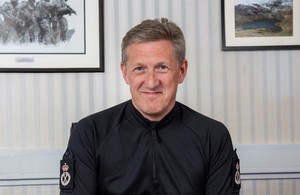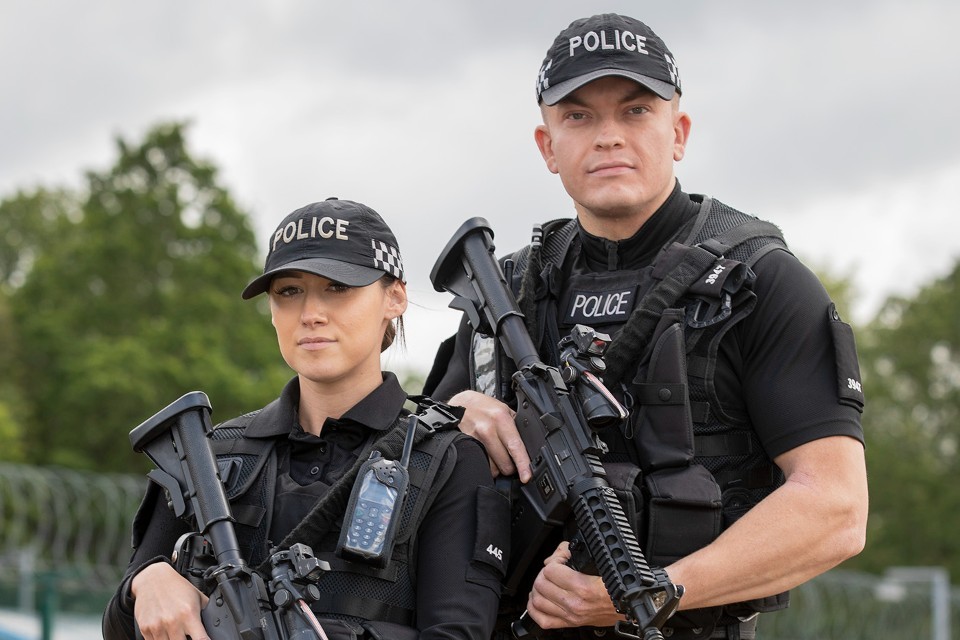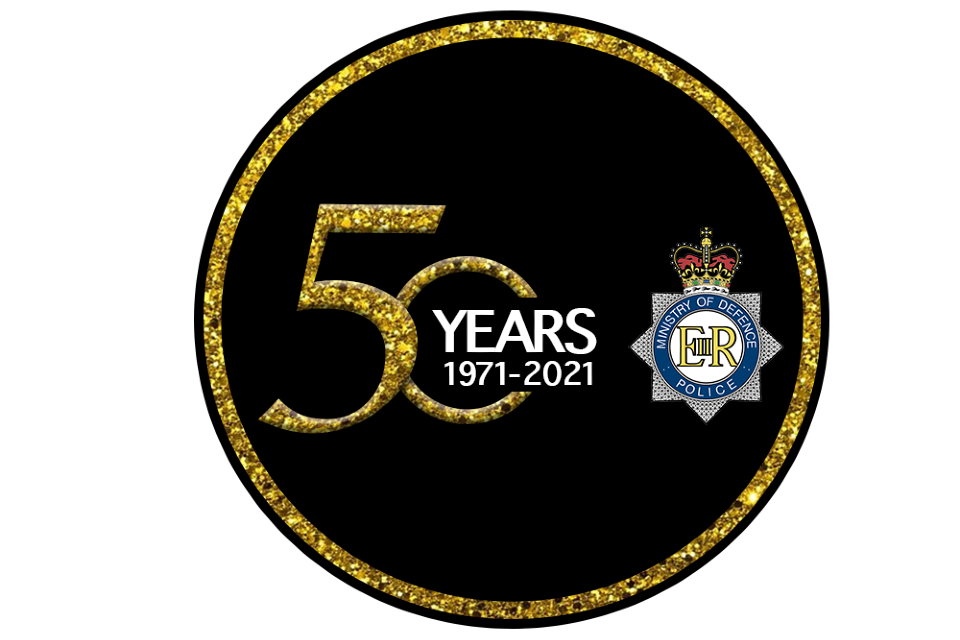Reflections on 50 years of the MDP
Andy Adams, Chief Constable of the Ministry of Defence Police, shares his thoughts on how the Force has changed and developed over the past half century, ahead of its 50th anniversary on 1 October.

Ministry of Defence Police Chief Constable Andy Adams sitting at desk
The beginning – 1971
For many of us old enough to recall it,1971 is a distant memory, but I recognise it is a year for which many of our younger colleagues and audience have no recollection whatsoever. So, let me either refresh (or illuminate) those reading this blog, with some key events from the year of our origin.
Whilst it was considered the height of fashion to be wearing miniskirts and platform heels in the early 70s, Ministry of Defence Police (MDP) attire consisted of blue shirts, with detachable collars until the mid-70s, and white shirts from Inspector rank, with woollen trousers (and a specially designed, sewn in, truncheon holder in the right-hand pocket). The early 70s saw a rise in the ratio of women going to work but, despite that, female representation in the workspace was still low and non-existent in the MDP; our first female recruits joined us in 1974.
Computing was a new concept, with Intel launching its first processor in November 1971. Paper and pen, and the occasional typewriter (for those with such skills), were the main forms of written communication, within policing and in wider circles too. Police officers relied upon evidence recorded in their pocket notebooks, which led to the obvious scrutiny in court to justify that notes were recorded ‘as soon as practicable after the event’.
The Force did little more (according to Wikipedia) than ‘man gates, check passes and occasionally patrol fences, armed with nothing more than a pistol’, and the civilian support to the Force came mainly in the form of administrative roles. MDP officers were located in many stations across the Defence infrastructure - from north to south, east to west.

Black and white image of Ministry of Defence Police officer carrying out gate duties, alongside an arriving vehicle
The modern MDP
Now, whilst many of us view aspects of policing (and MDP) history as important – for example the principles of policing, as endorsed by Sir Robert Peel, are as valid today as they have ever been – we are all acutely aware that the world constantly moves on.
Today, the MDP provides ‘Unique Policing Services’, far less associated with the simple guarding function most colleagues performed at our inception. Whilst there is still some work to do to better define what a police service can (and should not) perform in Defence, we are armed and capable of responding to a multitude of incidents both inside and outside the wire.
It is our capability to operate in the public space, delivering policing tactics such as Project Servator, that makes us a distinct asset to move threat reduction further from the sites and communities we protect. It is also our ability to use our policing powers, outside Defence, within the civilian population, that enable niche investigations to be conducted for the benefit of the MOD. Whilst most of our uniformed colleagues are armed (or provide support – or command – to those who are) our civilian capability has changed significantly too. Where policing skills are not required, roles are now performed by professional civilians and the MDP is the sum of that police-civilian mix.
Equipment has moved on considerably. An operational cop now wears equipment which is more suited to the role we perform (and reduces the ironing demand!). Although I acknowledge the common observation that ‘cops will always moan about equipment regardless of the quality’, our equipment is now far better suited to protecting the public, colleagues, and the officer. Our capability to use lethal force where necessary, justified, and proportionate is supported with less lethal options and an increased capacity to record interactions ‘live time’, which enables future scrutiny to be exercised.
We have seen many developments in technology and IT over the half a century of our existence. It is now possible to identify who we are dealing with as we interact with them, rather than relying on prolonged back office enquiries; it is also far easier to communicate in the operational environment and across police forces.
Our representation has certainly changed (albeit slower than perhaps many of us would wish). We are a Force which develops and changes constantly, as we deliver the professional policing service that Defence deserves, and which benchmarks us against the standards in wider policing.
Whilst some of the places we serve may have changed since the 1970s, MDP colleagues are still dispersed across the United Kingdom: almost 2,900 cops and 300 civilians, delivering from the far north of Scotland to the southern ports of England; from the east coast of Norfolk in to the borders of Wales; and across the Irish Sea in Northern Ireland. We are not just a Defence asset though, serving, with the agreement of the Secretary of State, United States Visiting Forces, critical national infrastructure sites and other service providers - as well as providing a scalable armed capability to wider policing at times of national emergency.

Ministry of Defence Police officers with firearms
Our people are our future
Our service is delivered through great people, whose commitment to our role was most recently demonstrated during the COVID-19 pandemic - one episode in our history and an example of the benefit Defence derives from MDP colleagues. I have no doubt we will need some of that commitment in large chunks as we move in to the next few years, with some significant changes for the MDP, including: the move of our Headquarters to RAF Wyton; new ways of delivering training; full fitness harmonisation with national policing standards; and post COVID-19 working arrangements, to name a few.
As I sign off, I wonder what any successor of mine might be writing about the MDP at our centenary… Short of any major medical advances, I can predict I won’t be about to read it, but some of you will. So, without trying to predict the detail of any future centenary blog, I am sure they’ll be saying, as I am, how proud they are to lead the very many committed colleagues who work in the MDP.
Andy Adams, Chief Constable – Ministry of Defence Police
Interested in a career with the Ministry of Defence Police?
Visit mod.police.uk for more information.
Read more:
50 years delivering unique specialist policing
A brief history of the Ministry of Defence Police July 2021 Medium
Ministry of Defence Police on GOV.UK
MDP Annual Business Plan 2020 and Corporate Plan 2020-25
Talk Through: the magazine of the Ministry of Defence Police

MDP 50 Years logo